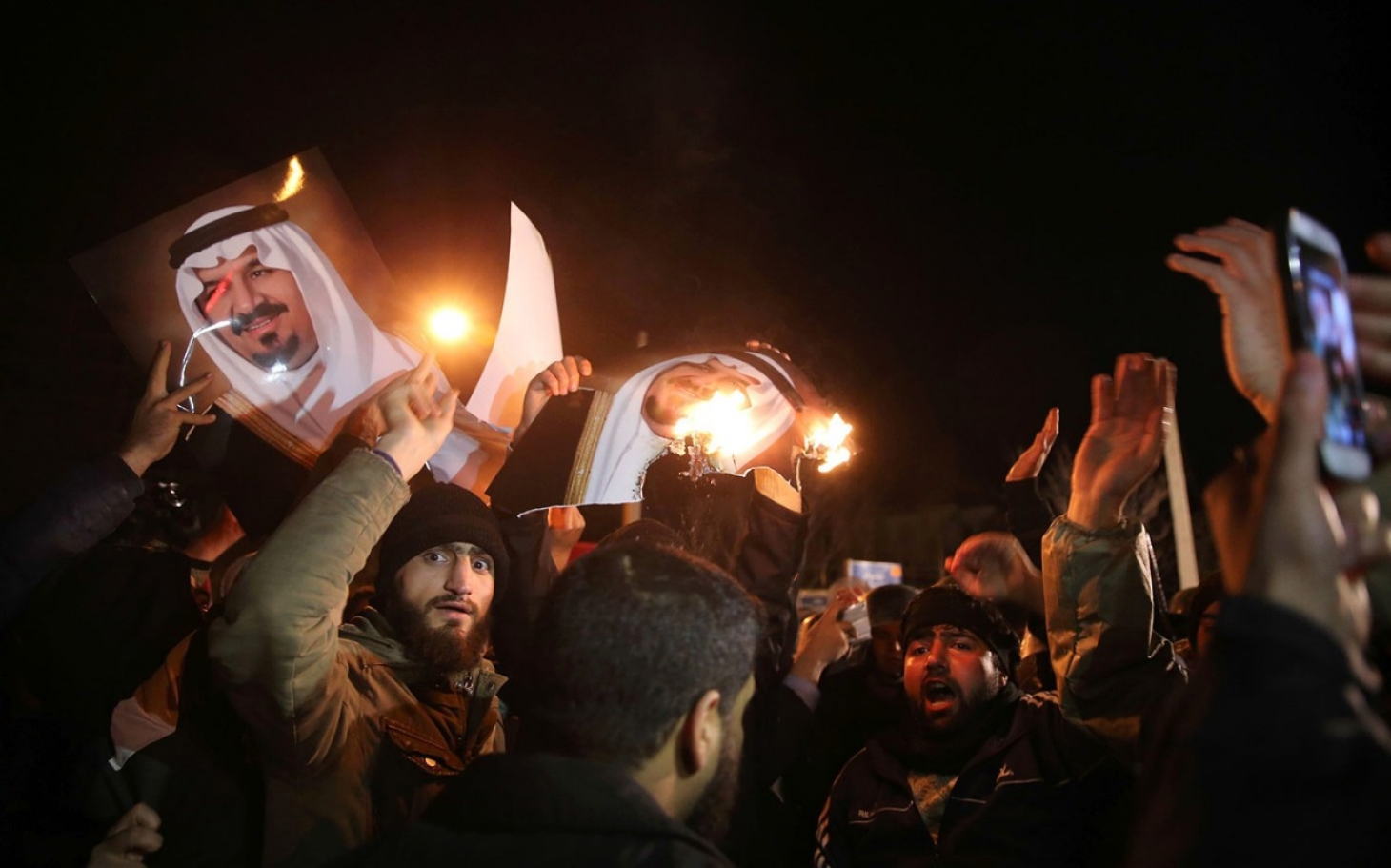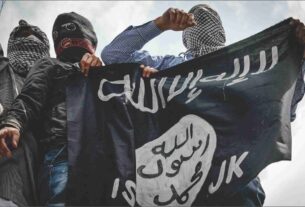Impact of Saudi-Iran rivalry in MENA region
Diplomats and officials of Saudi Arabia are privately revealing that if the present Gulf crisis persists it may lead to a round of war where Iran may take side to spread its influence. In recent years, the foreign policies of the Gulf Arab states, namely Saudi Arabia, the United Arab Emirates (UAE), and Bahrain, have become increasingly bellicose and more openly sectarian towards Iran.
Important drivers of this trend have been the rise to power of Islamist regimes in a number of Arab countries, the spread of terrorist groups, notably the Islamic State, as well as the changing geopolitical landscape of the region following the nuclear deal with Iran in July 2015.
In particular, Iran’s return to the international fold is viewed in Riyadh and other regional capitals as a significant threat that alters the status quo.
Since the wave of social and political unrest that swept the Arab world in 2011, Gulf Arab states have sought to safeguard their regimes from the dangers of popular revolt.
But while the Gulf Arab states have endeavored to maintain the status quo in the region, Iran has instead attempted to exploit internal divisions within countries in order to strengthen the hand of pro-Shiite forces.
In early February 2011, the Shia uprising in Bahrain (where Shiites constitute 80 percent of the population) was a wake-up call to the Gulf Arab regimes. Rightly or wrongly perceiving the hand of Iran in instigating the uprising, Saudi Arabia and the UAE intervened by sending in troops.
Iranian influence also extends to Yemen, where on September 2014, Houthi Shia rebels took control of the capital Sanaa. The Gulf Arab states have accused Tehran of providing military and financial support to the rebels.
The Saudi-Iranian proxy conflict is also readily apparent in Syria with Iran providing significant backing to the Syrian government whilst Saudi Arabia, Qatar, and Turkey have sided with the anti-government forces.
The growing influence of Iran thus represents a common concern for the Gulf Arab states. This concern has only increased since the signing of the nuclear deal, under which Iran’s nuclear capabilities will be reduced in exchange for the lifting of sanctions on it. A significant outcome of this will be the unfreezing of Iranian assets in foreign banks from oil revenues. Estimated at 100-140 billion dollars, it may enable Iran to provide even more support to its allies.
Saudi Arabia believes that this agreement has changed the balance of power in the region in favor of its rival Iran, especially in light of the US’s foreign policy pivot away from the Middle East and towards Asia.
It is in this context that one may understand the new hardline foreign policy of the Arab Gulf States. This shift can be summarized in three main points: first, sectarianism, anti-Shiite mobilization as a tool to blunt the influence of Iran; second, moves towards building regional alliances which do not depend on Washington; and third, a move from preventive policies to offensive policies.
Just two weeks before the start of the implementation of the Iranian nuclear deal, diplomatic relations between Saudi Arabia and Iran were cut after Saudi authorities executed the Shiite cleric Nimr Baqir Al Nimr.
The tensions spread to other Arab countries in the Gulf. Bahrain followed suit and announced the severance of diplomatic ties with Iran whilst the UAE, Qatar, and Kuwait all lowered the level of diplomatic relations with Iran.
In a further step that escalated tensions with Iran, the Gulf Cooperation Council (GCC) in March 2016 put Hezbollah – one of Iran’s most important allies in the Arab world – on its terrorism list. It justified its decision with the argument that Hezbollah conducts terrorist activities on the territory of the GCC states as well as provides support to the Houthis in Yemen.
In the framework of countering Iran’s growing military threat in the region, on March 26, 2015, Arab forces led by Saudi Arabia launched air strikes on a range of Houthi military targets in Yemen. Other participants included the UAE, Jordanian, Kuwaiti, Bahraini, and Qatari Air Forces.
These developments have served as a green light for Saudi Arabia to take leadership in the creation of a Sunni sectarian alliance against Iran. In December 2015, the Saudi defense minister and deputy crown prince, Prince Mohammed bin Salman, declared the formation of an “Islamic military coalition” of 34 Sunni Islamic states to fight terrorism under the leadership of Saudi Arabia.
Nevertheless, the creation of a Sunni “alliance” has not been without problems. There has been a failure to reconcile differences between Turkey and Egypt. Furthermore, Turkey’s rapprochement with Russia and incipient shift in its policy towards Syria has been viewed with displeasure in Riyadh, which showed initial reticence to condemn the July coup attempt in Turkey.
It is clear that the Gulf States are trying, through these policies, to face the interlinked nature of their complex domestic problems and external conflicts.
However, the increasingly sectarian approach in the confrontation with Iran is not likely to lead to a solution, but will only worsen the conflict between the parties, and could have serious repercussions on civil coexistence between Sunnis and Shiites. Such a split would benefit terrorist organizations such as the Islamic State. Indeed, one of the most negative consequences of the clash between the regional powers is the spread of terrorism in Syria, Yemen, and Iraq.
Underpinned by confrontation with Iran, the zero-sum game of sectarian politics has sharpened and bodes ill for stability across the Middle East.
Earlier, Qatar, now a Saudi outcaste, had expressed solidarity with Saudi Arabia by recalling its ambassador to Iran after hundreds of Iranians attacked Riyadh’s diplomatic facilities in Tehran and Mashhad in response to Sheikh Nimr al-Nimr’s execution.
Yet, later on, Doha announced that its ambassador would “return to resume his diplomatic duties” in Tehran. Undoubtedly, this move was indicative of the Saudi/United Arab Emirates (UAE)-led bloc’s failure to pressure Doha into aligning more closely with its fellow Sunni Arab states.
To the contrary, the Qatar crisis has pushed the emirate closer to Iran. Unless the 22-week dispute in the Gulf Cooperation Council (GCC) gets resolved, the GCC can feel quite confident about Qatar pursuing deeper ties with Iran for its geopolitical benefit throughout the highly divided region.
If the quartet (Bahrain, Egypt, Saudi Arabia and the UAE) maintains its blockade on Qatar, it would be difficult to imagine Doha not becoming further invested in closer ties with Tehran out of mere necessity.
Over the past few weeks, Iran has played a crucial role in enabling Qatar to function as a sovereign state without capitulating to the Saudi/UAE-led bloc.
As the only nonquartet country sharing a maritime border with Qatar, Iran has been pivotal in terms of enabling the Arabian emirate to meet food import requirements following the Saudi-Qatari border closure.
Shortly after the Saudi/UAE-led bloc cut off ties with Qatar, Iran opened its airspace to approximately 100 more Qatari flights each day that previously crossed the quartet countries.
Now that Qatar has adjusted many of its import/export routes since June 5, which Doha paid an economic price for doing, it is doubtful that the emirate would readjust them even if the GCC resolved its dispute, which is itself unlikely. Turning back to Saudi Arabia for food imports would only subject Qatar to Riyadh’s leverage in the future.
Tehran’s civilian leadership under President Hassan Rouhani has invested in initiatives aimed at convincing the smaller GCC members that Iran is a peaceful neighbor committed to the security and prosperity of all Gulf states.
The Qatar crisis has afforded Iran the opportunity to tell Arabs that it is Saudi Arabia, not Iran, that threatens Middle Eastern countries’ sovereignty. The crisis has also helped Tehran challenge the narrative that Iran’s foreign policy is sectarian.
Tehran is focused on improving relations with Sunni actors in the Middle East, recently including Turkey and Hamas in addition to Qatar, despite differences in regional crises, namely Syria.
Indeed, closer Qatari-Iranian relations could help promote a Sunni-Shiite dialogue in the region, especially given Doha and Tehran’s relations with a host of nonstate actors in regional hotspots where diplomatic channels are necessary for resolving conflicts.
Between the resolution of the GCC’s 2014 rift and the ongoing Qatar crisis’ outbreak, Doha put some distance between itself and Iran largely to secure better relations with Riyadh.
For example, in addition to pulling its ambassador to Tehran last year, Qatar also joined the Saudi-led military coalition in Yemen in March 2015 one year before designating Hezbollah a terrorist organization while maintaining the firm stance that President Bashar al-Assad’s departure from power was a prerequisite for peace in Syria.
The Arabian emirate was also one of the original 34 members of the Islamic Military Alliance to Fight Terrorism, unveiled by Saudi Arabia’s then-Deputy Crown Prince Mohammed bin Salman in December 2015.
Yet at this juncture and with Kuwaiti mediatory efforts proving futile, Qatar is preparing for a post-June 2017 foreign policy chapter in which it has severed ties with three GCC members.
As Qatar charts a new course in the beleaguered Middle East, Iran has reason to be confident that the emirate will seek closer and more cooperative relations with it, unless the quartet restores relations with Doha.




